Hellraising, Horror, and Whimsy: An Interview With Patty Templeton
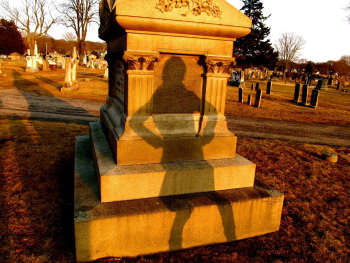
I first met Patty Templeton in a different life. I was a mouse with no tail, and she was a rat wearing an eyepatch. We were both in a dusty attic spying a sizable chunk of cheese that was placed in the middle of a large trap. She spun me a yarn about an adventure to meet the rodent god Capy Bara, and insisted that on her journey she learned a charm that would keep the trap from springing. But she had to concentrate. So while she focused her will, all I had to do was scamper over and snag the cheddar. Her tale was so convincing that I did… and then everything went dark. I trust she enjoyed the cheese.
I met her again in this life outside a Denny’s in a suburb somewhere going on 3am. I was leaning against a dumpster smoking, and she shuffled on by. She was dragging a rolled-up carpet towards a nearby drainage ditch. She paused for breath and told me that if I ignored the feet sticking out of the roll and helped her kick it into the ditch, she’d buy me breakfast and tell me a story. A kick and a roll later, I was fork-deep in chili mac and she was telling tales.
I’ve listened to her stories for the almost ten years since, and have found them thrilling, funny, witty, and completely unique. She went on to win the first Naked Girls Reading Literary Honors Award, which I discovered was a pointy award as she literally rubbed it in my face, as friends do. Now she’s gone and published her first novel, There Is No Lovely End, which contains outlaws, ghosts, curses, buildings that live, and a buckshot spray of other ghastly goings-on, all centered around the historical figure of Sarah Winchester. She let me ask her a few questions about it…
[Click on any of the images for super mondo versions.]
Tell me about the genesis of the idea for the novel.
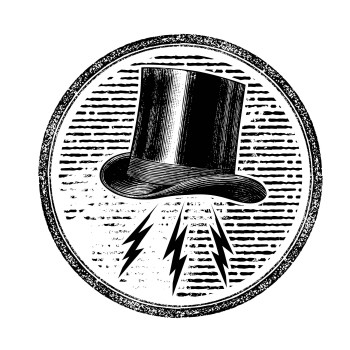 Me and my ma, a spitfire of a lady fulla adventure and deeply secretive Hungarian recipes, were roadtrippin’ along Highway 101 in California. We’d been to City Lights Books in San Francisco. I’d spent my time there praying to the paperbacks and Saint Ferlinghetti, whilst my ma bought a book stack.
Me and my ma, a spitfire of a lady fulla adventure and deeply secretive Hungarian recipes, were roadtrippin’ along Highway 101 in California. We’d been to City Lights Books in San Francisco. I’d spent my time there praying to the paperbacks and Saint Ferlinghetti, whilst my ma bought a book stack.
Now this was about ten years back, and my pretty ma, she says, “Let’s find a knife fight” and I, being adversarial, started chanting, “DINER NIGHT! DINER NIGHT! DINER NIGHT!” I mean, there’s no reason a knife fight couldn’t happen while pie was being had, but not being able to make up our minds, we ended up driving endlessly.
And in San Jose.
My ma’s steering this way and that, careening through town. I’m cruising through a Triple-A guidebook. I spot the entry for the Winchester Mystery House™. A flash of light – and the world turns to grey flickering memory – I see myself as two whiskers shorter than a kitten, sitting in a hard-backed chair at the Frankfort Public Library reading a book about Real! Ghost! Stories! Sarah Winchester. Mystery mansion. Rifles. Ghosts. Yes. I know this place. It calls to me like donuts at midnight.
My mother, she is not hard to convince. This is the self-same woman who traipsed into a disreputable wildwood looking for boneyards with me – all the while being followed by a murder of crows. She can hand the Weird and Creepingtastic.
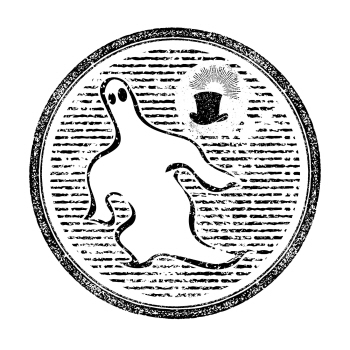 So we go to this Winchester Mystery House™. The tour is maybe 2 hours and the house is over 160 rooms and the stained glass windows are gorgeous and holy crap, did you see the door that led to a 20-foot drop? And those stairs that went to the ceiling…weird. The tour guide was knowledgeable… but by the end of it, me and my ma, we are both like, “WHAT THE F?”
So we go to this Winchester Mystery House™. The tour is maybe 2 hours and the house is over 160 rooms and the stained glass windows are gorgeous and holy crap, did you see the door that led to a 20-foot drop? And those stairs that went to the ceiling…weird. The tour guide was knowledgeable… but by the end of it, me and my ma, we are both like, “WHAT THE F?”
Because really? Really? Sarah Winchester was painted as a sorrowing, hysterical, haunted hermit.
Some things weren’t adding up. I mean… who knows, maybe the house tours are different now… but ten years back, the guides emphasized as much of the spooky and lunatic as possible. It seemed like the legend was getting told, but not Sarah Winchester’s actual story.
Genesis of novel: I wanted to give Sarah Winchester a fair shake. Sure, she was surrounded by death and oddity, but that didn’t make her crazy. I wanted to know how she went from living in New Haven, CT to building a Victorian mansion in San Jose.
We’re there any themes you wanted to directly address?
Hell. I have no idea. The only sure-fire elements of story I had in mind were that I wanted to tell Sarah Winchester’s story before she built her mystery mansion and I wanted to know who the unknown Boston medium was that sent her out west to build it.
Also, I wanted to have female characters in heroic, ordinary, and villainous roles front and center.
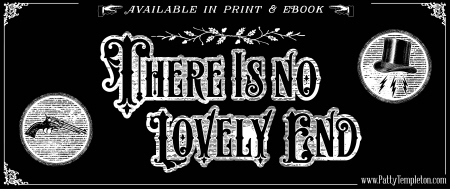 Next – how much research did you do into Sarah Winchester’s life? And how much leeway did you give yourself when it came to fictionalizing things and events in her life that are documented as fact?
Next – how much research did you do into Sarah Winchester’s life? And how much leeway did you give yourself when it came to fictionalizing things and events in her life that are documented as fact?
Here’s the deal… when I started writing There Is No Lovely End, there were no reliable biographies about Sarah Winchester. After visiting the Winchester house on multiple occasions, me and my ma went to the California Room of the San Jose Public Library. This is where all of my hardcore research came from.
The California Room is the local history room. It has everything from newspaper editorials written about Winchester during her lifetime to modern day articles. I did the brunt of my Sarah Winchester-specific research in one day with the assistance of my ever lovin’, ever patient ma. I’m Chicago people. I’m working class. I couldn’t afford multiple holidays out to California to do research. It had to be a one-shot deal of MEGA NOTES and photocopying. After that, my research was through the internet and inter-library loan.
…and I fictionalized the dickens outta this book. The milestones (when Sarah Winchester was married, when certain people in her life died, when she moved from Connecticut to California, etc.) – these are all correct, but everything around them, heck! 90% of the characters, are fictitious.
Side note: More recently, an excellent book about Sarah Winchester has come out – Captive of the Labyrinth by Mary Jo Ignoffo.
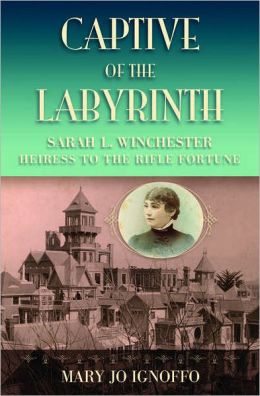 In the novel you do a great job of balancing harder-edged elements (such as people dying suddenly and horribly) with more whimsical elements (such as living buildings and animal ghosts). Is that a purposeful mix, and how challenging was it to achieve?
In the novel you do a great job of balancing harder-edged elements (such as people dying suddenly and horribly) with more whimsical elements (such as living buildings and animal ghosts). Is that a purposeful mix, and how challenging was it to achieve?
It wasn’t purposeful… it’s the way my brain works. There’s a lot of dark shit going on in there, but then there’s also red pandas high-fiving quokkas. The balance wasn’t difficult to achieve because it’s my default. It’s harder for me to write straight-laced contemporary fiction than personified animals and peculiar violence.
If I took an honest look at myself, a lot of my early influences were from movies, not necessarily books. Clue, Evil Dead 2, Tremors, Ghostbusters, Gremlins 2, Beetlejuice… these are all films I watched over and over and all of them have equals parts humor to their horror (or murder, in the case of Clue). I absolutely have bookish influences, but movies molded my brain first. Apparently they baked it into a muffin of quirky, hyperbolized brutality.
For aspiring writers who read this interview – how long did it take you to write the novel, and what was your daily process?
Ugh. Here’s the harsh reality on this first novel.
Timeline: I got the idea for There Is No Lovely End at 23. I was too “busy” writing crappy, crappy short stories, working at a bookstore, and effing around at rock and roll shows to really plan out my novel until I was 26. From 26 – 28 I had two jobs and, I shit you not, zero days off except for major holidays for two years. During those two years I realized, OH MY GOD, I AM GETTING OLD.
Or not necessarily old, but geez, I need to start working harder on the things that are important to me – namely, my book. During those years, I wrote from 2 – 4 p.m. between my jobs. At 28, I quit one job so I’d have more time to write, but then the second job offered me full-time status and I took it. From 28 – 30 I wrote multiple drafts and had input from beta readers. During these years, I work-worked till abt 5 p.m. and tried to write-work from 7 – 10 p.m. It didn’t always go as planned, but by 31, the book was published.
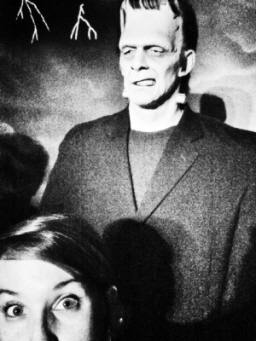
My daily process looks different now. I’m a full-time writer. I just finished a short story. I started a novella. I am planning a novel-in-stories about a macabre Winesburgian town. Projects don’t take me as long because my schedule looks like this: At my kitchen table/desk by 9 a.m. Done screwing about on social media by 9:30. Writing absolutely no later than 10 a.m. I put in an eight hour day. If I make my word count before that eight hours is up, I can quit early and read or watch movies or go to petting zoos or pine over Pinterest recipes and rhinestones.
The novel was self-published. What goes into that process, and now that you’ve been through it, are you glad you went that route? What are some of the ups and downs?
To self-publish a book and make it look professional takes a fair bit of time and money. The general outline is thus: finish a book for reals, have it edited by a professional, format your print book, format your ebook, do NOT tweak your manuscript after the editor put their hands on it, query and contract for cover (and miscellaneous) art, go through at least one (preferably more) printed proofs of your book, hit publish.
Oh yeah, and make sure that the entire time you’ve been finishing and formatting your novel you’ve been building relationships within the industry so that when your book goes live at least a few people notice and want to spread the news. But since a few people aren’t enough, here’s hoping you have dipped your hand into the murk of marketing because there are queries to send out – for reviews, for consignment, for panel participation at conventions, etc.
The ups of self-publishing are that you have total control over what your product looks like and you may get more money per copy sold. The downs are that you have to become an expert in everything from book design to marketing and it doesn’t matter if you’re getting more money per copy if no one is buying. Every writer these days – big house, small house, no house – has to do some self-promotion, but those that self-publish have double-fistsfull.
I would self-publish again, but I also think that one of the most successful strategies I’ve seen is when authors go hybrid and are a part of the traditional publishing structure and have the leeway to self-publish.
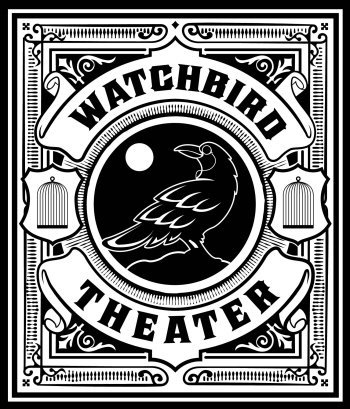 If you could choose a few albums for readers to have on in the background as soundtrack music while reading the novel, what would you recommend?
If you could choose a few albums for readers to have on in the background as soundtrack music while reading the novel, what would you recommend?
This is a hella rad question… because you aren’t asking what I was listening to when I wrote the book, you are asking, what readers could listen to that would amplify their experience of reading it.
An obvious choice would be Tim Burton-related soundtracks by Danny Elfman, like Edward Scissorhands or Sleepy Hollow. Hans Zimmer’s Sherlock Holmes soundtrack might go well. I’ve been told by one reader that he listened to Nick Cave the entire day that he read my book, but I’m not sure which albums. In the more clamorous moments, Innumerable Seeds of Calamity by the Peculiar Pretzelmen is fitting.
This would’ve been a lot easier if you asked for a playlist…because a lot of bands have fitting songs, but not necessarily whole albums that suit There Is No Lovely End. Like the Goddamn Gallows’ “Instant Major Felony” or “Dance Macabre” by Camille Saint-Saëns.
You’ve created a unique world in the novel with specific rules and magic. I’m sure you can’t wait to get to other projects, but would you ever consider returning to this world, perhaps with different characters or with a different time setting?
I doubt I would focus on different characters… but there is a temptation to someday go back into this world and expand what is already there. I’m sure the Reverend Doctor Enton Blake has plenty of interesting stories to tell and the Watchbird Theater? I love that place. I’d be interested in knowing more of its early history with Arrol Wester at the helm.
Are there any ideas that you’re excited to get to next? Or are you still in the post-release haze of not being sure what to tackle?
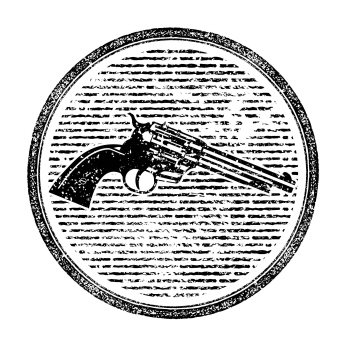 Sweet Eris, there’s a hellton I want to get to. I have two main projects on the burner.
Sweet Eris, there’s a hellton I want to get to. I have two main projects on the burner.
One: I am writing a lesbian Indiana Jones pastiche set in the 1950s rare book world. It’s a novella exploring music and myth, particularly the idea of what if Robert Johnson did meet the Devil at the crossroads and he came out of the meeting with a songbook.
Two: I am planning a short story collection, or maybe it will be a novel-in-stories, about a gleefully macabre town dedicated to horror and Halloween. Imagine Winesburg, Ohio meets The Gilmore Girls, meets Sam Raimi.
I’m sure you’ve had to describe the book many times in interviews and at signing events. Instead of summing up plot points, tell the folks out there why you’re proud of this novel and why they should read it.
Step right up, folks, and flip through 452 pages of wonder, wit, and outrage. Of misery, lust, and murder. Of more than eight years of my life, good and bad, that went onto the page, in addition to recounting the fictional history of Sarah Winchester.
It’s a helluva thing to finish a book. It takes hard work and a horde of people. So, if you were on the edge of maybe buying the book or maybe not, buy it in dedication to my ma. Maybe if enough of you snag a copy, I’ll be able to afford to build her that castle I promised her when I was ten.
For more hellraising, horror, and whimsy, here’s Templeton’s website, Twitter, and Tumblr. And her book, There Is No Lovely End, you can grab it here.
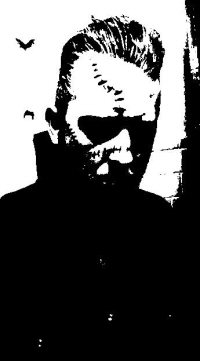 Frank Stascik is a horror writer based in Chicago, Illinois. His stories have been published in magazines such as Dark Moon Digest and Bete Noire, as well as the first Arcane Anthology.
Frank Stascik is a horror writer based in Chicago, Illinois. His stories have been published in magazines such as Dark Moon Digest and Bete Noire, as well as the first Arcane Anthology.
He’s mostly friendly, so say hello to him on Facebook, or visit his Tumblr for a dose of cheesy horror and naked ladies.